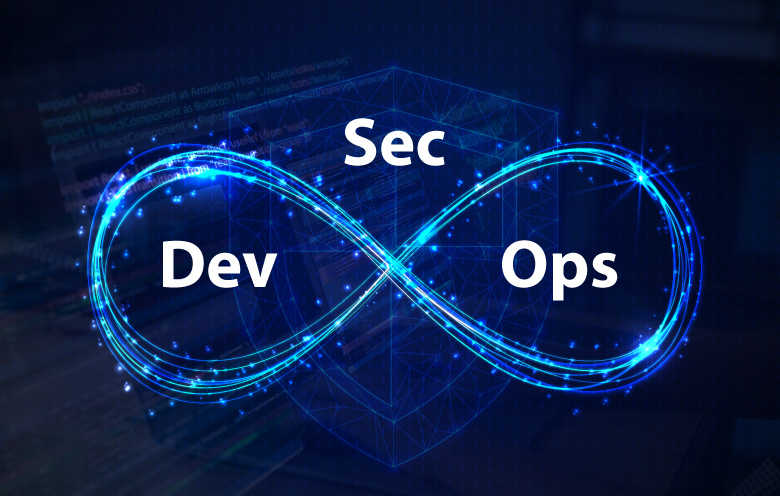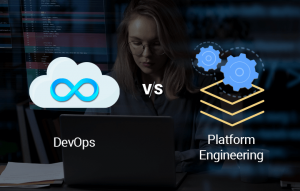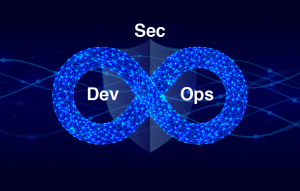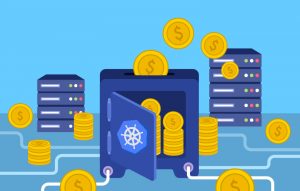In the era of boundless virtual connectivity, are your digital assets truly secure? Traditional security methods struggle to defend against the cyberattacks. DevSecOps is a proactive and resilient way of protecting your digital assets by integrating development, security and operations seamlessly.
DevSecOps is not just a buzzword. It’s a mindset shift that requires collaboration, automation and a proactive security-first approach. However, you may struggle to find the answers for the questions like, “What the ideal way is to implement DevSecOps?”
Let’s explore the best practices of DevSecOps that you can adopt to ensure the longevity and effectiveness of your security practices throughout the development cycle.
Implementing the DevSecOps culture
DevSecOps is a culture that integrates security into the development and operations (DevOps) lifecycle. It involves fostering a mindset of proactive security practices, collaboration and continuous improvement.
A leader play a vital role in facilitating this mindset shift. Their responsibility is to articulate a clear vision to the team members and provide them with the necessary resources to make DevSecOps implementation a reality. Embrace the power of DevSecOps and empower your organization to prioritize security throughout the entire development process.
Some of key roles and responsibilities as leaders in this process include:
- Setting the vision and goals
- Building awareness to adopt the DevSecOps culture
- Providing resources and support
- Leading by example by demonstrating their commitment
- Breaking down silos by promoting cross-functional teams,
- Fostering communication and encouraging transparency
- Continuous learning and improvement through experimentation and feedback
- Recognizing and celebrating success
Leaders’ active involvement and commitment are essential for the successful adoption of DevSecOps practices throughout the organization.
Strategies for promoting a DevSecOps culture include:
- Providing security training for developers
- Conducting regular security-focused meetings and workshops
- Rewarding secure practices
- Fostering cross-functional collaboration between development, security and operations teams.
Measuring and monitoring the success of your DevSecOps culture involves tracking key performance indicators (KPIs). It also involves assessing various metrics related to security, collaboration and operational efficiency. The metrics you can track for the success of the DevSecOps culture are:
- Security metrics such as vulnerabilities detected and resolved, the average time to fix them and the effectiveness of security controls implemented.
- Deployment frequency
- Mean time to recover (MTTR) from security incidents or breaches
- Security testing coverage: Measures the percentage of code coverage, security testing frequency and testing tools’ effectiveness in identifying vulnerabilities.
- Code quality evaluation is based on metrics such as code review completion rate, code complexity and adherence to secure coding practices.
- Regular assessments and feedback loops help track progress and identify areas for improvement.
Adopting automation in DevSecOps
Automation is crucial in DevSecOps as it enables consistent and reliable security measures, reduces manual effort, enhances accuracy and speeds up processes. Automation enables for a DevSecOps culture by integrating security seamlessly into development and operations processes.
Automation helps you identify vulnerabilities early, ensures security controls are consistently applied, enables rapid and repeatable deployments and facilitates continuous monitoring. It improves efficiency, security, continuous monitoring and incident response, scalability, consistency, compliance adherence, collaboration and cost savings.
It enables you as an organization to build secure and reliable software while meeting the demands of today’s dynamic and fast-paced development environments.
Challenges include selecting the right automation tools, integrating them into existing processes and addressing the learning curve associated with new technologies. Ensuring compatibility between different tools and managing automation workflow complexity are also important considerations.
Overcoming these challenges requires careful planning, training, collaboration and a phased implementation approach.
DevSecOps automation strategy
A successful automation strategy in DevSecOps includes:
- Identify opportunities for automation
- Prioritize security automation
- Select suitable automation tools
- Integrate security checks into the development pipeline
- Foster collaboration between teams
- Implement continuous monitoring
- Treat security configurations as code
- Provide training on automation tools and practices
- Continuously improve automation processes
- Promote a strong security culture
By following these steps, you can effectively leverage automation to streamline security processes, improve efficiency and foster a culture of continuous improvement in DevSecOps.
Best practices for adopting automation include starting with small, achievable automation goals. They also include involving all relevant teams in the automation process. Also, conducting pilot projects to test and refine automation workflows and regularly evaluating and updating automation tools and processes.
Balancing security and speed in DevSecOps:
Achieving a delicate equilibrium between robust security measures and rapid software delivery is difficult. It is challenging due to the perception that security measures may slow down development cycles. Tight deadlines, pressure to deliver quickly and resistance to change can also hinder the deployment of robust security practices.
Addressing these challenges requires a proactive approach, teams’ collaboration, security automation implementation and a cultural shift that prioritizes security alongside speed. It involves adopting a risk-based approach, integrating security throughout the development lifecycle and continuously evaluating and improving security practices.
Strategies for balancing security and speed in DevSecOps:
- Shift security practices early in the development lifecycle.
- Automate security testing throughout the CI/CD pipeline.
- Implement security as code for consistent and version-controlled security configurations.
- Continuously monitor systems and implement real-time threat intelligence
- Foster collaboration between the development, security and operations teams.
- Provide education and training on security practices.
- Implement flexible security controls aligned with your risk appetite.
- Emphasize continuous improvement and feedback loops.
- Incorporate compliance requirements from the beginning of the development process.
This ensures security measures are integrated throughout the development lifecycle while maintaining efficiency and agility.
Best Practices for integrating security into the DevOps Pipeline:
Implement security as code: Use version control and automation tools to manage and enforce security measures consistently across the pipeline.
Shift-left security: Conduct security reviews, threat modeling and risk assessments during the design and planning stages to identify and address vulnerabilities early on.
Continuous security testing: Include static code analysis, dynamic application scanning, vulnerability assessments and penetration testing to identify and remediate security issues at each stage of the pipeline.
Security in build and deployment processes: Securely configure and harden build and deployment processes. Ensure that containers, server configurations and cloud infrastructure are properly secured and follow security best practices.
Continuous monitoring: Implement continuous security monitoring to detect and respond to security threats in real-time. Employ intrusion detection systems, log analysis and security information and event management (SIEM) tools to identify and address security incidents promptly.
Security training and awareness: Provide security training and awareness programs for all team members involved in the DevOps pipeline.
Collaborative approach: Encourage regular communication and knowledge sharing to ensure that security considerations are integrated into all aspects of the pipeline.
Automated compliance checks: Incorporate automated compliance checks into the pipeline to ensure that applications and infrastructure adhere to relevant regulations and industry standards.
Secure dependencies: Regularly update and monitor third-party dependencies to address any security vulnerabilities or weaknesses.
Incident response planning: Develop and test an incident response plan to effectively handle security incidents. Define roles and responsibilities, establish communication channels and conduct regular drills to ensure preparedness.
Techniques for optimizing security and speed in DevSecOps include:
- Using secure coding practices to develop robust and secure software.
- Implementing security testing early in the development process to identify and address vulnerabilities.
- Leveraging containerization and microservices architecture for flexibility, scalability and isolation of components
- Implementing continuous monitoring to detect and respond to security threats in real-time.
- Establishing incident response processes to effectively handle security incidents and minimize their impact.
- These techniques enable rapid and secure software delivery within the DevSecOps framework.
Building a DevSecOps Pipeline
Building a DevSecOps pipeline refers to the process of establishing a continuous integration and continuous delivery (CI/CD) pipeline that incorporates security practices throughout the software development lifecycle.
A DevSecOps pipeline typically includes stages such as code development, version control, continuous integration, automated testing, security scanning, artifact management, deployment and monitoring. Each stage incorporates security measures and automated processes.
Best practices for designing and building a DevSecOps pipeline include designing a modular and flexible pipeline architecture, integrating security at each stage, implementing version control for code and infrastructure configurations, utilizing containerization and orchestration tools and automating testing, security scanning and deployment processes.
Strategies for optimizing the DevSecOps pipeline include:
- Implementing parallel processing and concurrent testing to reduce bottlenecks.
- Optimizing code delivery and deployment processes to minimize downtime.
- Integrating feedback loops for continuous improvement.
- Leveraging infrastructure-as-code to manage and scale environments efficiently.
By embracing DevSecOps principles and establishing a robust pipeline, organizations can confidently deliver secure, high-quality software while effectively managing risks and meeting the demands of the modern digital landscape.
Implementing DevSecOps Tools:
DevSecOps tools are crucial for organizations looking to integrate security practices seamlessly into their software development and delivery processes. Tools should align with organizational requirements, support automation, integrate seamlessly into the pipeline, provide comprehensive security scanning and monitoring capabilities and offer scalability and extensibility.
Here is a list of popular DevSecOps tools:
- Static code analysis tools (e.g., SonarQube)
- Vulnerability scanning tools (e.g., OWASP ZAP)
- Security information and event management (SIEM) systems (e.g., Splunk)
- Container security tools (e.g., Docker Bench Security)
- Configuration management tools (e.g., Ansible)
Best practices for using DevSecOps tools effectively include regularly updating and patching tools, customizing tool configurations to align with organizational policies and standards, continuously monitoring and analyzing tool outputs and reports and leveraging tool integrations and APIs to enhance automation and information sharing.
By embracing these tools, you can strengthen their security posture and improve the overall quality of your software. Ultimately, the implementation of DevSecOps tools empowers organizations to deliver secure and reliable software solutions.
Ensuring compliance in DevSecOps:
Compliance ensures that your software systems meet regulatory, industry and organizational security requirements. Compliance measures protect sensitive data, mitigate risks and build trust with customers and stakeholders.
However, there are several challenges to ensure compliance, including:
- Keeping up with evolving compliance standards and regulations
- Integrating compliance checks into automated pipelines
- Ensuring consistent security controls across different environments
- Maintaining auditability and traceability of security measures
Strategies for incorporating compliance into DevSecOps involve mapping compliance requirements to specific security controls, integrating compliance checks into automated testing and scanning processes, documenting and tracking compliance measures, conducting regular audits and involving compliance teams in the development and deployment process.
Best practices for maintaining compliance in DevSecOps include:
- Implementing version control for compliance-related artifacts
- Documenting compliance processes and procedures
- Conducting regular risk assessments and vulnerability scans
- Performing periodic compliance audits
- Staying informed about evolving compliance standards and regulations
Following these best practices helps you build trust with customers, regulators and stakeholders. This is done by demonstrating a commitment to protecting data privacy, maintaining confidentiality and adhering to regulatory standards.
Conclusion
The integration of security into every stage of the process ensures vulnerabilities are detected early and mitigated promptly. This minimizes the risk of data breaches and cyberattacks. With DevSecOps consulting services, organizations can achieve a right balance between security and agility. This will enable faster delivery of secure software and enhance overall business resilience. Don’t ignore the power of DevSecOps best practices – they are the key to building a robust security posture and safeguarding your organization’s valuable assets in the digital age.









